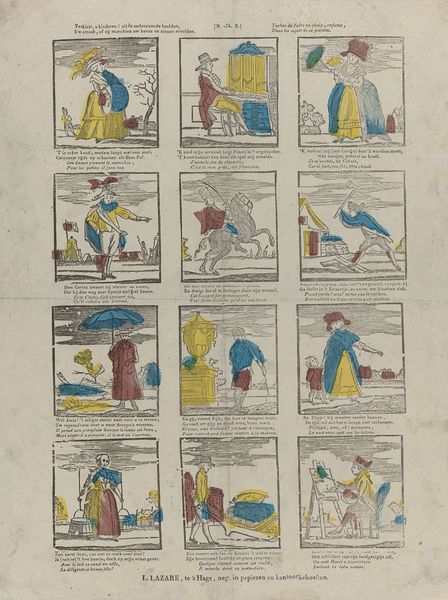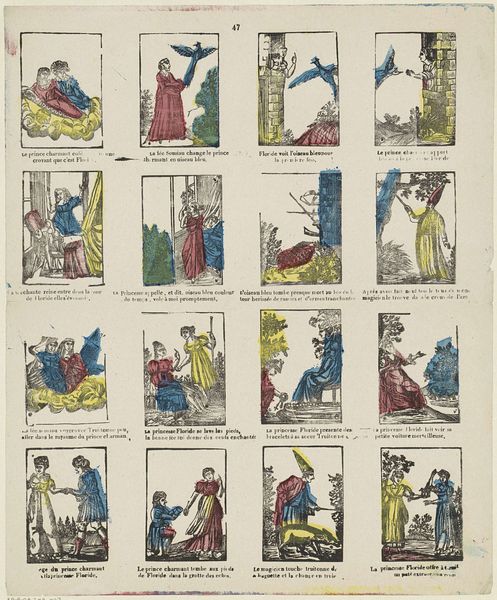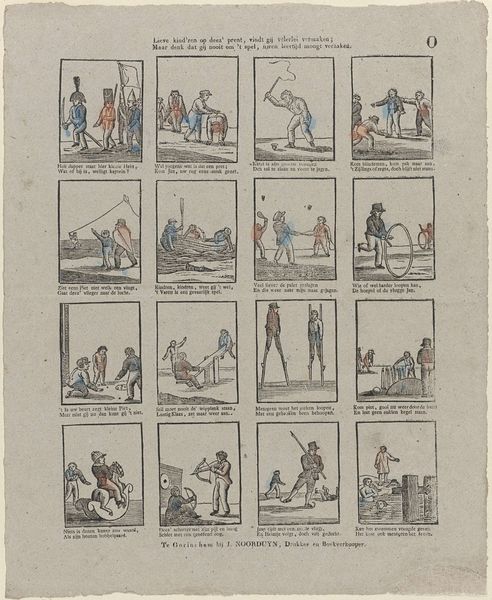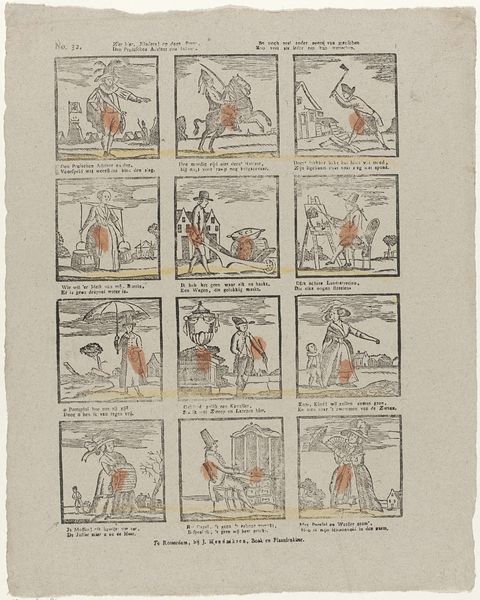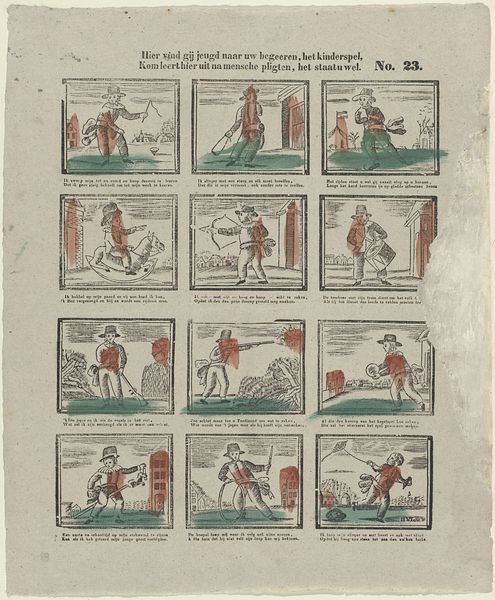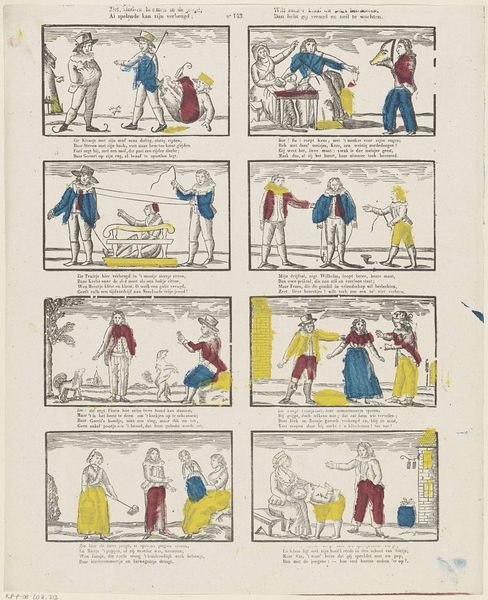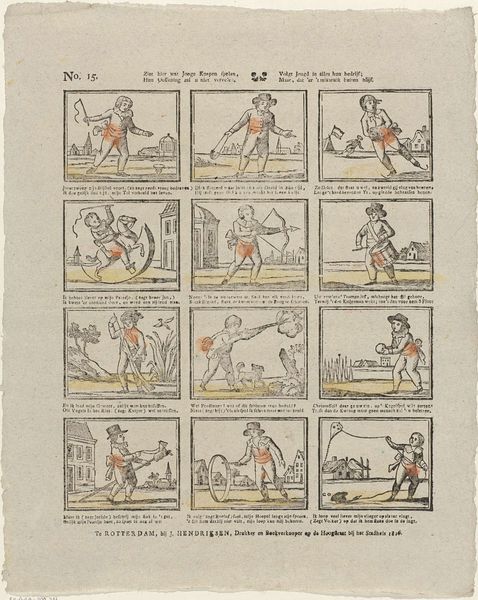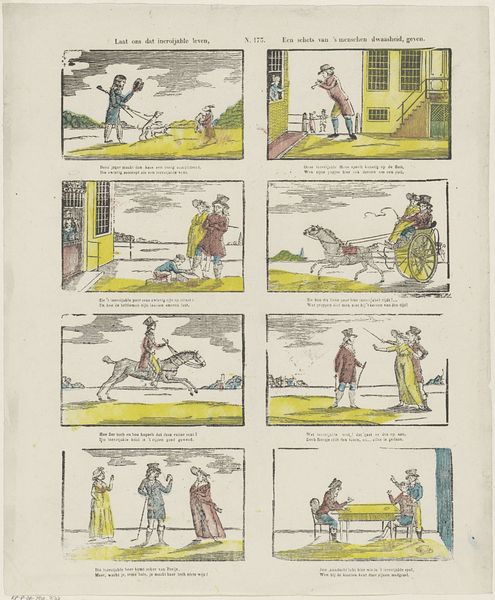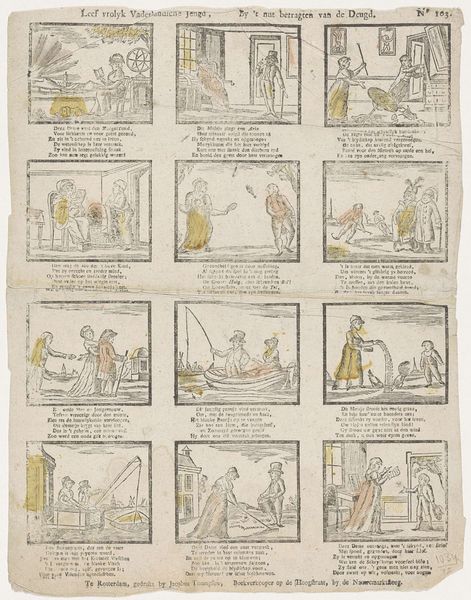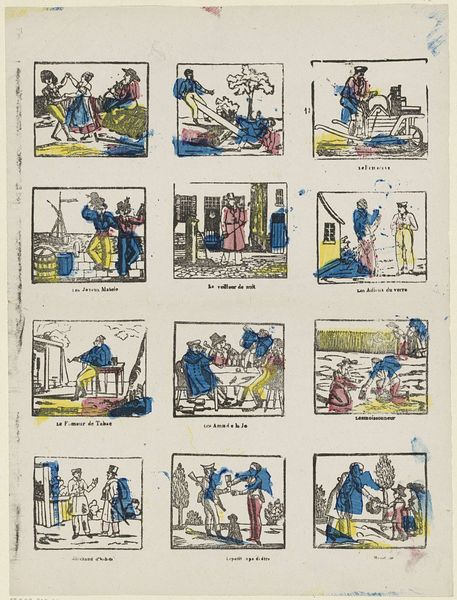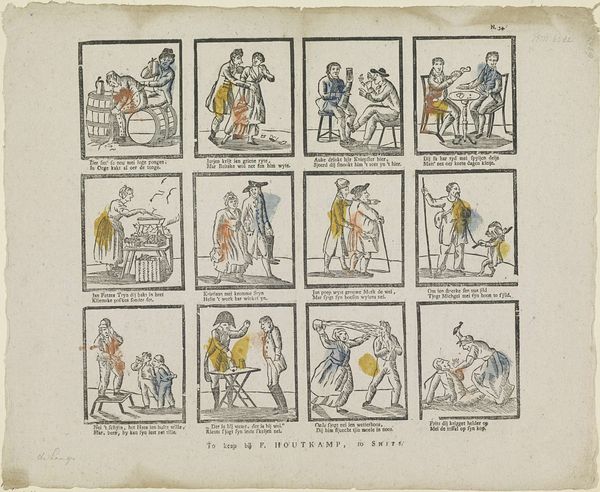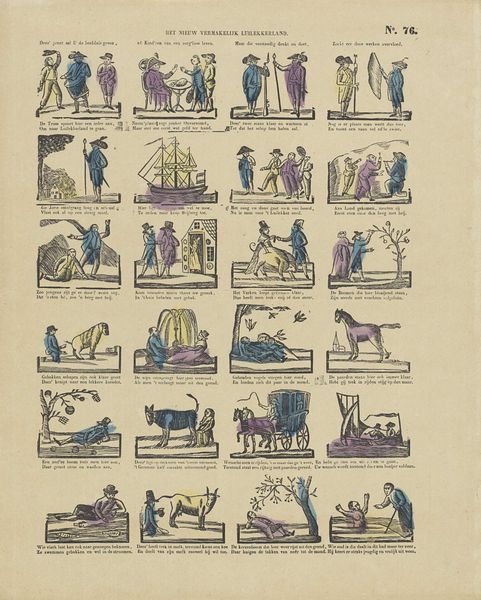
Niet steeds brengt rijkdom of het geld den mensch geluk en voorspoed aan, / Zoo als g'uit de geschiedenis van Hans van Poolen na kunt gaan 1827 - 1894
0:00
0:00
graphic-art, print
#
graphic-art
#
narrative-art
#
comic strip
# print
#
comic
#
genre-painting
Dimensions: height 382 mm, width 320 mm
Copyright: Rijks Museum: Open Domain
Curator: Let's dive into this intriguing print, "Niet steeds brengt rijkdom of het geld den mensch geluk en voorspoed aan, / Zoo als g'uit de geschiedenis van Hans van Poolen na kunt gaan" by Johannes Egbertus van Lieshout, dating from 1827 to 1894. It's currently housed in the Rijksmuseum. What strikes you most about this work? Editor: Well, it's laid out like a comic strip, almost. The colours are simple and the scenes seem to depict stages in a story. What really jumps out is the cautionary title... how do you interpret this piece, considering the social context of its time? Curator: Exactly! The artist utilizes a sequential narrative format, likely echoing popular chapbooks or broadsides that disseminated moral tales. The visuals and text operate together, aiming to instill a message about wealth, or lack thereof, during a period of increasing social stratification. The early to mid 19th century saw dramatic shifts in economic power and anxieties, and the politics of imagery really become something to look at here. Editor: So it's a warning? Curator: Partially. But it is more than simply an artist admonishing wealthy individuals to maintain a more 'level' playing field between the social classes. You notice some imagery more readily lends itself to 'old Dutch tropes.' We'd need to consider its reception and consumption, its public role… did the message resonate across different social strata or mainly reinforce existing values for a specific audience? Editor: So, by examining the work's social context, we gain insight into not just the story itself, but also the values it promotes and the people it may have influenced? Curator: Precisely. This artwork allows us to understand the broader dialogues surrounding wealth, poverty, and societal expectations circulating within 19th-century Netherlands, making it a compelling visual artifact from this historical period. Editor: This work prompts great reflections on historical nuances and the use of imagery!
Comments
No comments
Be the first to comment and join the conversation on the ultimate creative platform.
